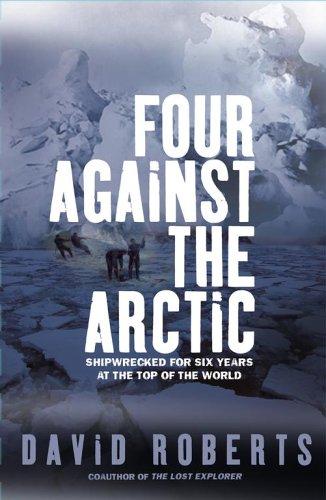What a story!
4 stars
I visited Svalbard (Spitsbergen) this year. While we were standing next to our snow mobiles in the middle of nowhere, trying to spot some polar bears the guide mentioned that back in 1749 four russian sailors were stranded on a nearby island with only a knife, an axe, some flour and a rifle with a handful of bullets. Their ship was destroyed and all their crew mates gone. Somehow they managed to build basic weapons, fixed an old hut and overwintered (the whole of the polar night!). They had to keep the fire going all the time because they had no tinder to light a new one. Constantly they were in danger of being attacked by polar bears. 6 years (!!) an 3 months later another ship passed by and finally they were rescued. I immediately started searching for more information on this story and found this book. The author …
I visited Svalbard (Spitsbergen) this year. While we were standing next to our snow mobiles in the middle of nowhere, trying to spot some polar bears the guide mentioned that back in 1749 four russian sailors were stranded on a nearby island with only a knife, an axe, some flour and a rifle with a handful of bullets. Their ship was destroyed and all their crew mates gone. Somehow they managed to build basic weapons, fixed an old hut and overwintered (the whole of the polar night!). They had to keep the fire going all the time because they had no tinder to light a new one. Constantly they were in danger of being attacked by polar bears. 6 years (!!) an 3 months later another ship passed by and finally they were rescued. I immediately started searching for more information on this story and found this book. The author goes on a wild goose chase to find out more about the story and then even sets out to Svalbard to try and find the hut. It's a great book, I enjoyed it very much. Probably because of the story that its about. The author seemed a bit full of himself sometimes, first talking trash about the author of his primary source (Le Roy, who interviewed the sailors at the time), next about the guide they hired and such. Also he keeps sitting in Paris and Moscow cafes appreciating the beautiful women. Eye roll but ok. On the last pages though I finally had enough when he tries to draw a moral conclusion (which he criticised before in other authors) and then writes "Yes, later, in the Neolithic, all over the world men had independently invented the bow and arrow, just as women had learned to make pots and lamps from clay." He was probably there to witness what happened exactly. It's still worth reading though! Anyways, I discovered the original source by Le Roy is on Archive.org (its in german): archive.org/details/bub_gb_-kxCAAAAcAAJ/mode/2up

